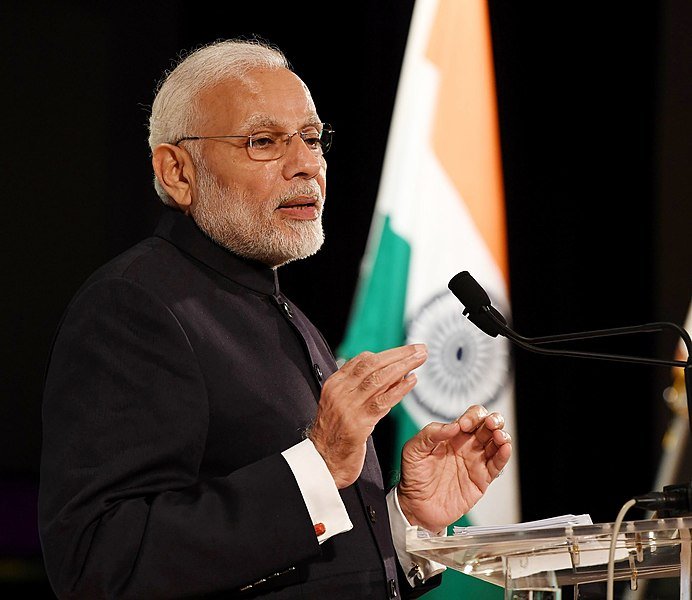
The approach revolves around four pillars, each assessing a different aspect of the provision of healthcare. The meeting occurred following the one-year anniversary of Modi’s flagship healthcare scheme Ayushman Bharat, officially known as the Pradhan Mantri Jan Arogya Yojana (PMJAY), under which an estimated 46.4 lakh individuals have received treatment this year alone. The scheme forms one of the four pillars of Modi’s approach to UHC.
The first pillar: Preventative healthcare
The first pillar is preventative healthcare. For this, the Prime Minister has placed a particular emphasis on yoga, Ayurveda and fitness. India has been leading the way in this category, with its successful lobbying for the UN to recognise International Yoga Day and the recent announcement of a national campaign, the Fit India Movement, to encourage physical activity.
These tenets of preventative healthcare could be key in India tackling its colossal burden of noncommunicable diseases, which were responsible for 61 percent of deaths in the country in 2016. Heart disease alone accounted for 28.1 percent of deaths that year. A large portion of these deaths were deemed to be preventable.
Lifestyle changes have been occurring across much of the world, in which sedentary lifestyles and unhealthy diets are becoming the norm. With these changes come increased risks of NCDs such as cancer and heart disease due to a rise in risk factors such as obesity.
A focus on exercise such as yoga, along with healthy diets (exemplified in the Eat Right India campaign), could play a major role in reducing risk factors for NCDs and lowering rates of such conditions accordingly. In addition, overall health can be improved which, in turn, could improve treatment outcomes for infectious disease through the reduction of comorbidities.
In terms of preventative healthcare, Modi also referenced efforts to increase screening. “The government is setting up more than 1,25,000 wellness centres and with the help of these, lifestyle diseases like diabetes, blood pressure, depression etc. can be controlled,” said Modi at the UN meeting. The BJP has pledged to open 1.5 lakh health and wellness centres in total and the Centre plans to open 40,000 such centres by March 2020.
Modi also addressed recent government policies to curtail harmful lifestyle habits. “The rising craze of e-cigarettes is a matter of concern. To save the youth from this serious danger, the Indian government has banned e-cigarettes,” he added. This latter point has been a matter of contention while tobacco – a major risk factor for diseases such as cancer – has seemingly been sidelined in favour of e-cigarettes.
The second pillar: Affordable healthcare
“We have launched the world’s largest health insurance scheme – Ayushman Bharat,” Modi said. “Under this scheme, 500 million poor, have been given the facility of free treatment worth up to Rs 5,00,000 every year. In the last year, 4.5 million people have been benefited from this.”
Also referenced was the price capping of cardiac stents, a move which came in response to considerable price markups between producer to consumer leaving many cardiac procedures all but unaffordable to many in India. Modi noted that “the price of stents for the heart has been reduced by up to eighty percent and the cost of knee implants has been cut by fifty to seventy percent…Hundreds of thousands of people are also taking advantage of the free dialysis services provided by the government.”
The third pillar: Medical and health supply
Less has been said in regards to the third pillar of Modi’s vision for UHC in India. Supply, in this context, refers to both medical infrastructure and provision of medical education. Modi has mentioned that the government has taken several “historic steps” for quality medical education and medical infrastructure development, though not included details. The National Medical Commission – a major overhaul of the medical education sector in India – is among the highest-profile policies enacted by the Centre in this regard.
An issue perpetually blighting the Indian healthcare system is a lack of trained medical staff. Various attempts have been made to resolve the issue, including upping retirement ages of doctors; providing bridge courses for Ayurvedic practitioners to play a limited role in providing allopathic care; and even allowing dentists to stand in as doctors in some capacities.
A more permanent solution will likely be found as India begins to build new medical colleges to train increasing numbers of medical personnel. In addition, measures are being put in place to mandate that doctors spend time after their graduation working in rural health facilities. Such a move could ensure an alleviation of the disparity in the quality of care received between urban and rural locations.
The fourth pillar: “Mission mode intervention”
As part of the fourth pillar, Modi has stated that if mothers and children are healthy, then society as a whole will be healthier. To this end the country is embarking on both nutritional campaigns, as well as campaigns to eliminate a number of illnesses. “We have started the National Nutrition initiative in mission mode,” added Modi.
Modi has also pledged to eliminate tuberculosis (TB) – ahead of global targets. While the UN has set a deadline of 2030 in its Sustainable Development Goals to ending the TB epidemic, Modi said the target year that India has set for itself to end TB is five years ahead of the UN deadline. “We have set this target in mission mode in 2025,” he explained. “I’m fully confident that we will be able to achieve this target.”
Modi concluded his address with a Sanskrit proverb: ‘Sarve Bhvantu Sukhin, Sarv Santu Nirmaya’, a saying that translates into “wishing all happiness, wishing all a disease-free life.”

